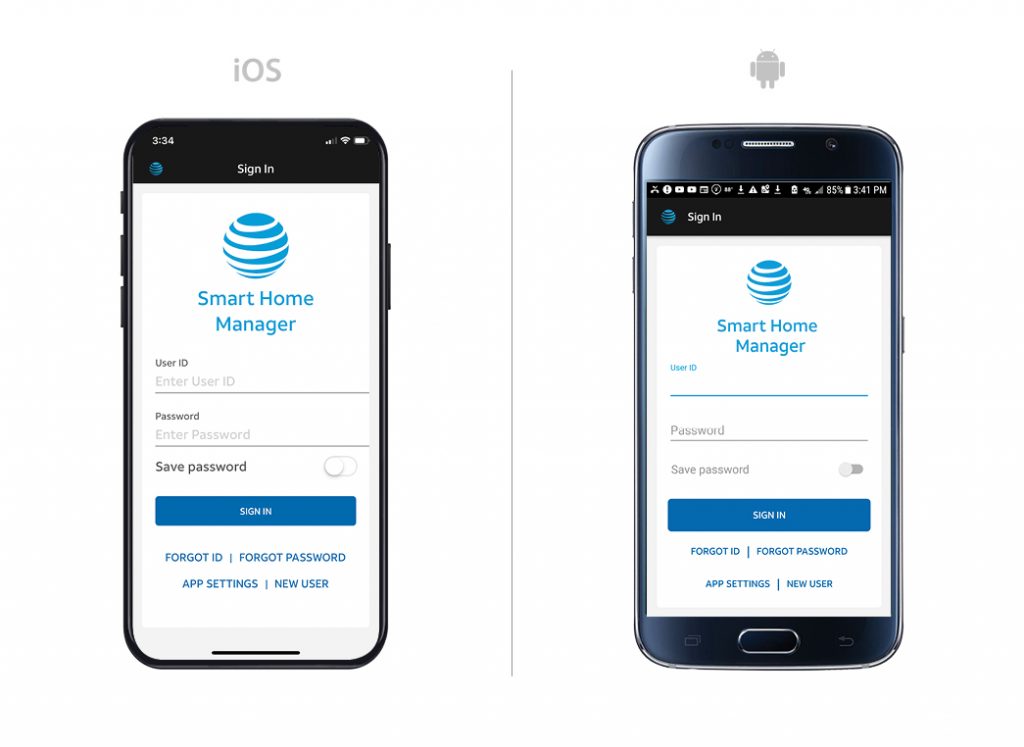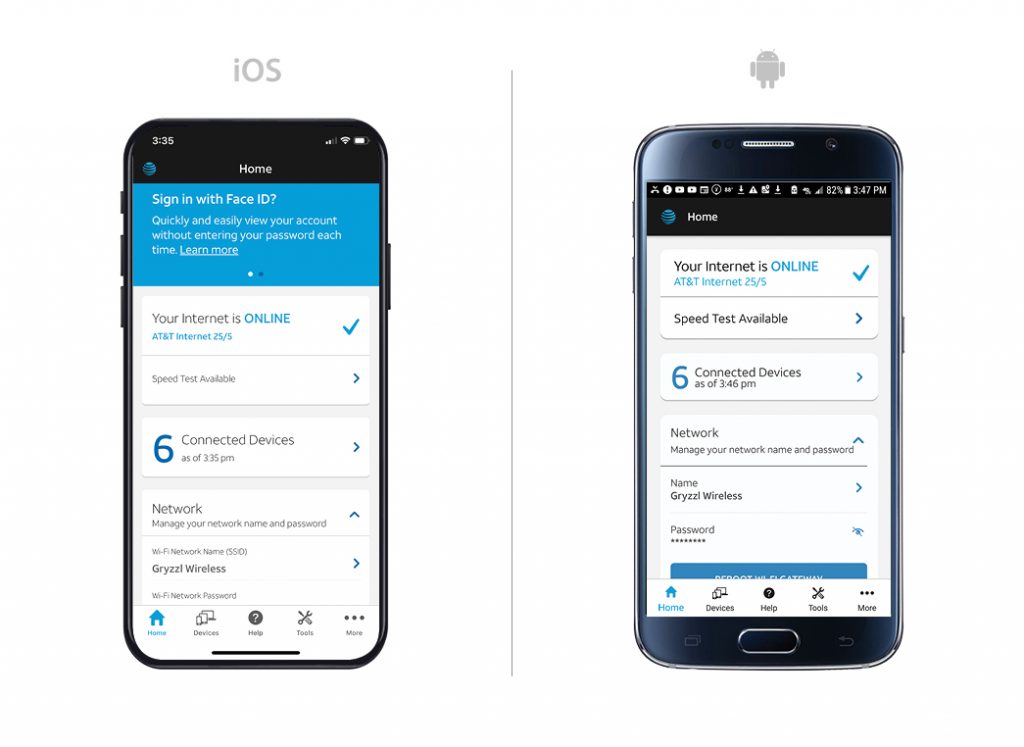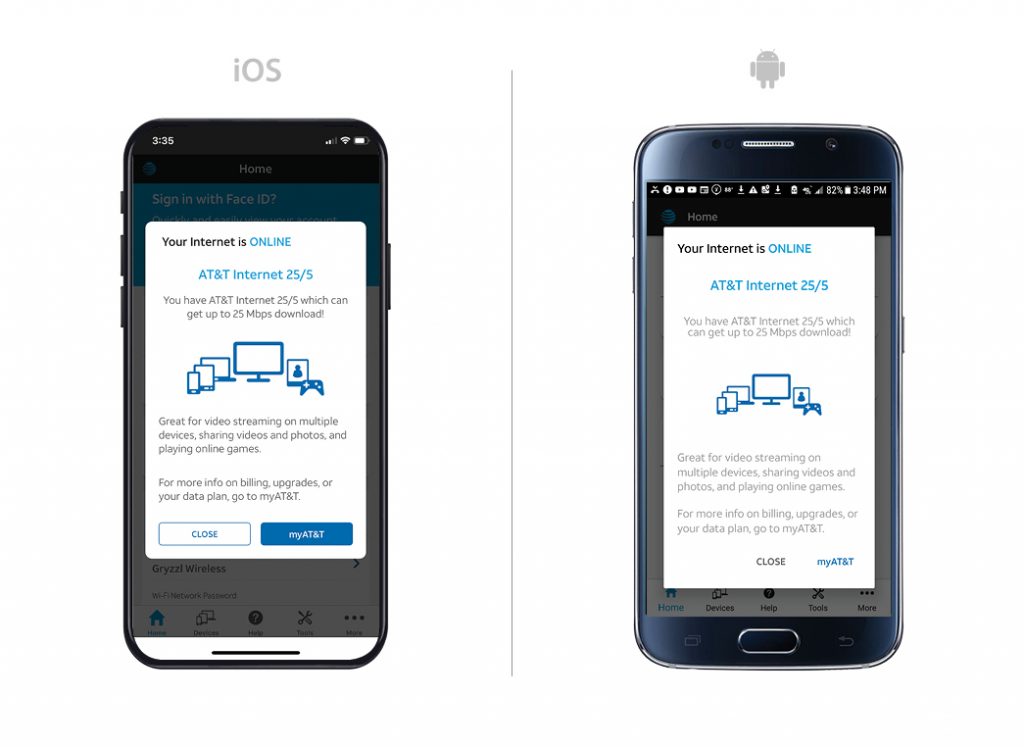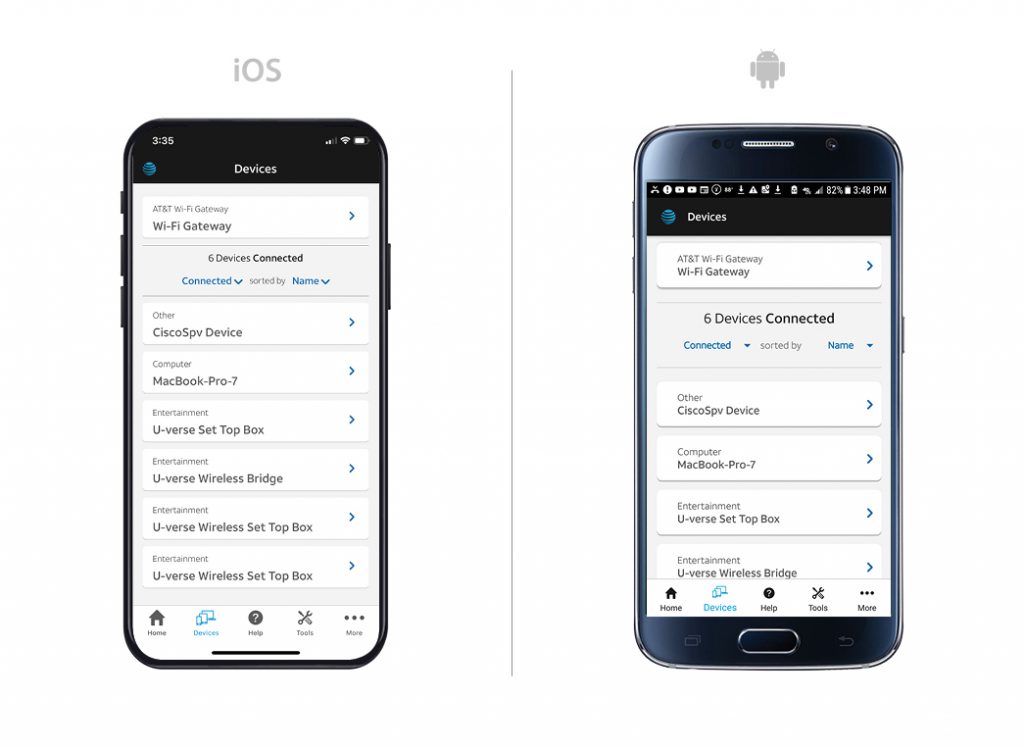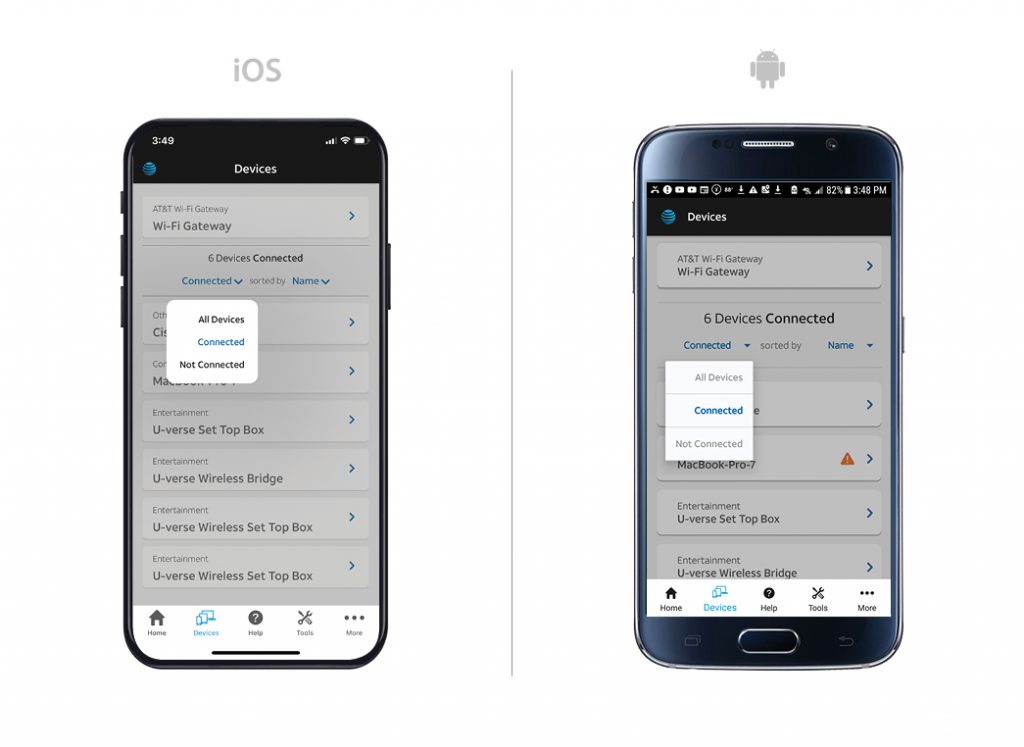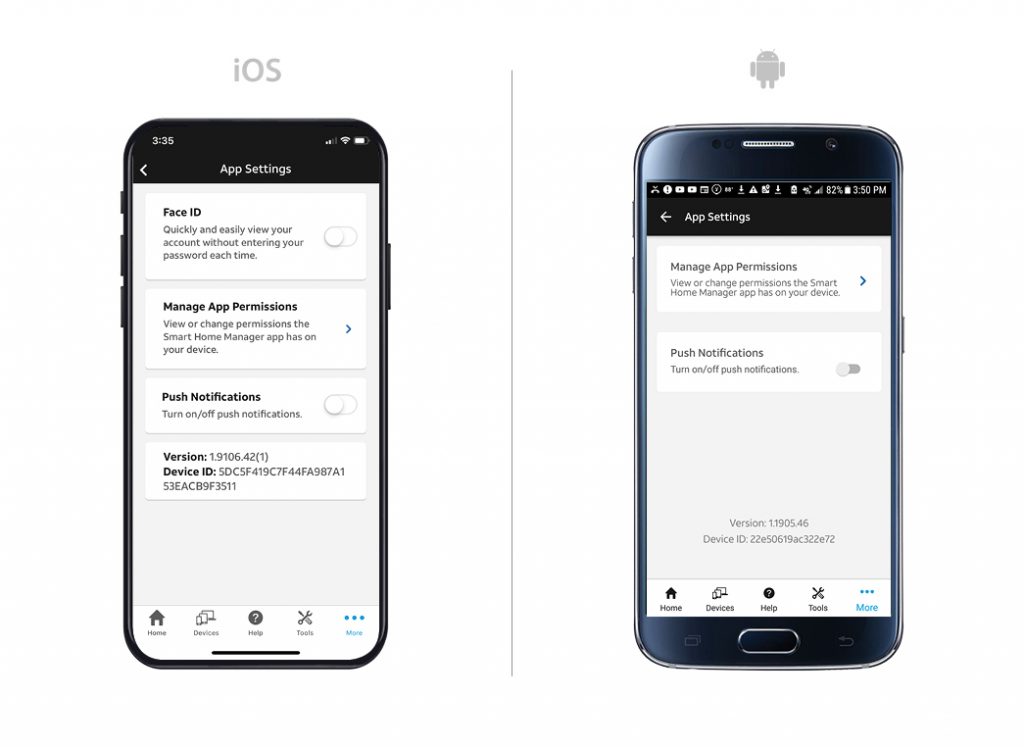iOS + Android – Native App Design
Smart Home Manager – AT&T
Internal AT&T product designed to allow users to personalize and manage their home Wi-Fi network. Allows users to see what devices are connected to their home Wi-Fi, invite guests to access Wi-Fi via text or email and check internet connection speed from anywhere. Users can also reset their residential gateway without having to contact customer service.
Header
Header design is centered on iOS and left-aligned on Android to fit native standards. Logo and title design is larger on iOS to accommodate larger vertical height of screen compared to Android.
User ID + Password
iOS fields include headers and pre populated user commands compared to Android, where only User ID has a field header and Password is pre populated as an inherent command.
Save Password Toggle
Toggles are designed to fit native iOS and Android style respectively.
Native Alert
New feature designed for Face ID integration on iOS devices.
General Styles
White boxes, grey borders, rounded corners and drop shadows all styled to fit standards for iOS and Android respectively.
Global Navigation
Global Navigation is set to anchor at bottom of both experiences for iOS and Android.
Corners
Modal on iOS designed with larger rounded corners compared to more squared, less rounded corners on Android.
Buttons
Buttons styled for iOS compared to text links on Android as per native standards.
General Styles
Device list on iOS styled with tighter padding and AT&T standards for dropdown. Device list on Android styled with native Android standards stripping AT&T dropdown arrow in favor of Android triangle drop down.
General Styles
Drop down list styled with rounded corners and no line separators on iOS. Android drop down is styled with squarer corners and 1px divider lines as per native standards.
General Styles
iOS design includes all content within individual boxes, added feature for Face ID, utilizing native toggles. Android experience takes Version and Device ID out of boxes and places them as a footer below, while Push Notifications utilizes native Android toggle.



